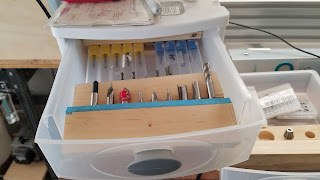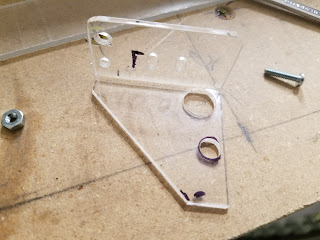Routing PVC Hexagons
ROUTING PVC While working on a trophy project I learned a lot about cutting PVC on the CNC. Generally the stuff cuts like butter, is strong and can result in a smooth and rugged surface finish. I also successfully finished it with custom custom acrylic colors. THE MATERIAL PVC (Polyvinyl Chloride) Sheet, Opaque White, Standard Tolerance, UL 94/ASTM D1784, 1/4" Thickness, 12" Width, 24" Length THE BIT I used a compression bit for the first time and it worked well. These up/down bits are inexpensive: https://www.amazon.com/gp/product/B073RKCWGH/ref=oh_aui_search_detailpage?ie=UTF8&psc=1 I would expect that this OnSrud 63-703 bit would also work well and since it is 1/16 will remove less material. It is however more expensive. THE SPEED Spindle: Feed Rate: 30ips TABS: I tried tabs but would not recommend them unless you want to do a lot of cleanup. The tabs are hard to file off while keeping a smooth finish. I use tape to hold the material to the...




